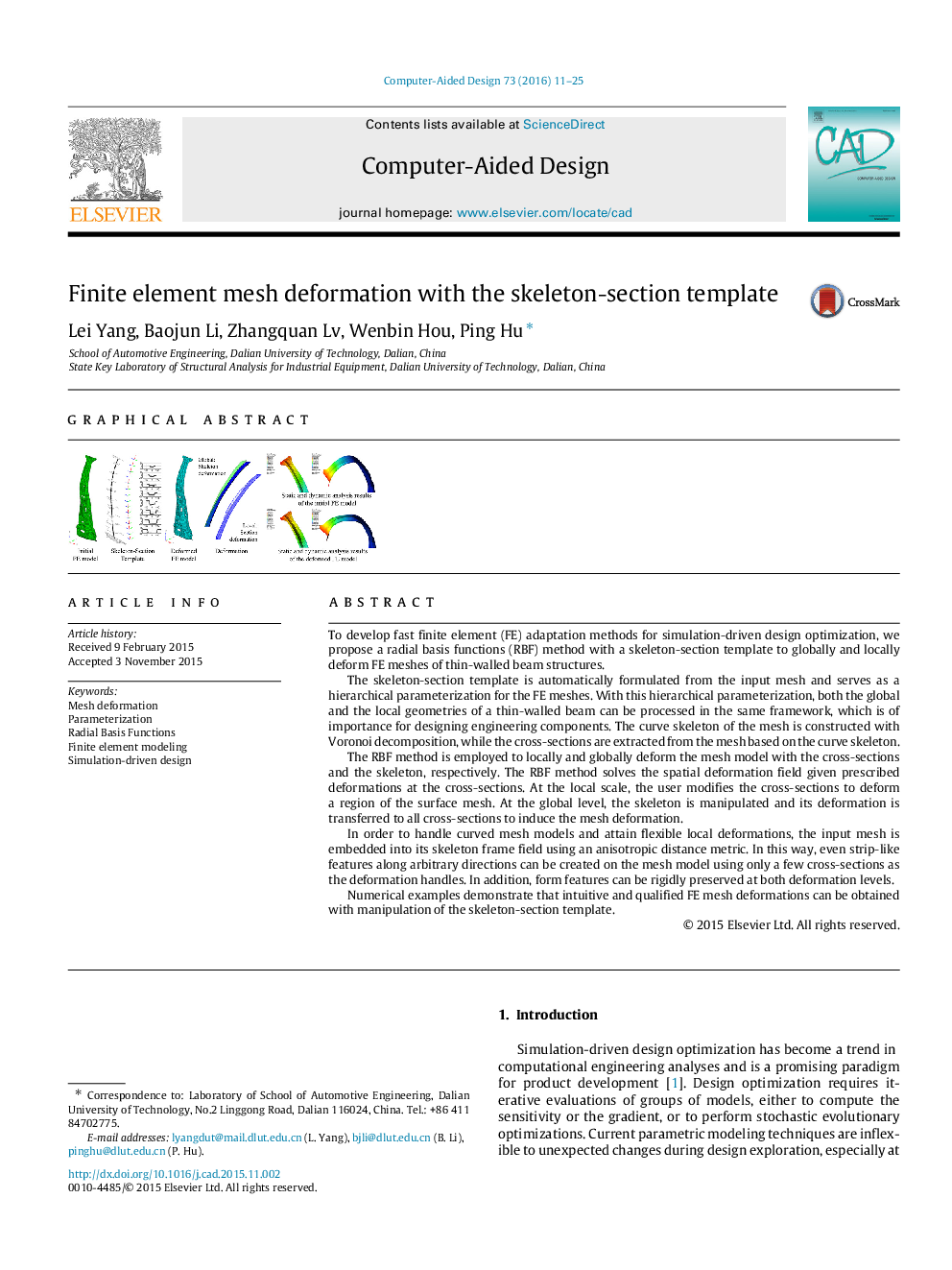| کد مقاله | کد نشریه | سال انتشار | مقاله انگلیسی | نسخه تمام متن |
|---|---|---|---|---|
| 439973 | 690929 | 2016 | 15 صفحه PDF | دانلود رایگان |
• The skeleton-section template is designed to parameterize the input FE mesh hierarchically.
• FE meshes can be deformed globally with the skeleton and locally with the cross-sections.
• Local mesh deformations along prescribed directions are realized by anisotropic metric in the embedding space.
To develop fast finite element (FE) adaptation methods for simulation-driven design optimization, we propose a radial basis functions (RBF) method with a skeleton-section template to globally and locally deform FE meshes of thin-walled beam structures.The skeleton-section template is automatically formulated from the input mesh and serves as a hierarchical parameterization for the FE meshes. With this hierarchical parameterization, both the global and the local geometries of a thin-walled beam can be processed in the same framework, which is of importance for designing engineering components. The curve skeleton of the mesh is constructed with Voronoi decomposition, while the cross-sections are extracted from the mesh based on the curve skeleton.The RBF method is employed to locally and globally deform the mesh model with the cross-sections and the skeleton, respectively. The RBF method solves the spatial deformation field given prescribed deformations at the cross-sections. At the local scale, the user modifies the cross-sections to deform a region of the surface mesh. At the global level, the skeleton is manipulated and its deformation is transferred to all cross-sections to induce the mesh deformation.In order to handle curved mesh models and attain flexible local deformations, the input mesh is embedded into its skeleton frame field using an anisotropic distance metric. In this way, even strip-like features along arbitrary directions can be created on the mesh model using only a few cross-sections as the deformation handles. In addition, form features can be rigidly preserved at both deformation levels.Numerical examples demonstrate that intuitive and qualified FE mesh deformations can be obtained with manipulation of the skeleton-section template.
Figure optionsDownload as PowerPoint slide
Journal: Computer-Aided Design - Volume 73, April 2016, Pages 11–25
